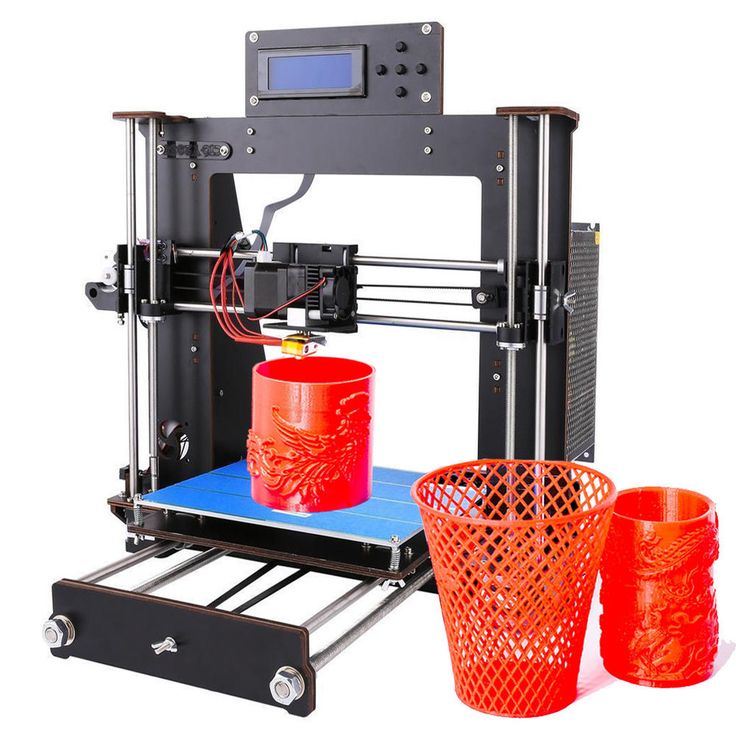Can 3d printers print multiple colors
Guide to Color 3D Printers
Are you looking to 3D print parts in color or to create vibrant, multi-color parts? Over the last few years, multiple new methods have emerged to 3D print in color, and newer 3D printers have become more accessible, empowering any designer, model maker, or hobbyist to create objects in a range of hues.
In this guide, we dive into the several techniques you can use to produce colored 3D printed parts, as well as the technologies and applications of color 3D printing.
There are several options to produce colored 3D printed parts, from color mixing to color matching, full color 3D printing, painting 3D printed parts, and hydrographics.
Direct color, also known as multicolor 3D printing is the most basic way to 3D print parts in multiple colors. It involves loading colored raw material into the printer. The most common way is using colored filaments with 3D printers that use fused deposition modeling (FDM) technology, which melts and deposits the filament onto the printer bed.
FDM 3D printing in color. (source: 3Dnatives)
FDM 3D printers can print in a single color, using colored filament, in two colors, using a dual extruder, or in multiple colors and gradients using color mixing, depending on how many filaments feed through the printer simultaneously.
The main advantage of these multicolor 3D printers is that they're easy to use and affordable. However, the disadvantages are that it’s not possible to achieve a specific color tone, and the final part will likely have visible layer lines. Also, the more extruders an FDM printer has, the bigger the chance of print errors.
While direct color printing only offers off-the-shelf color options, color matching allows you to create 3D printed parts in almost any custom color.
SLA 3D printed parts in various custom colors.
As the first integrated color-mixing solution for stereolithography (SLA) 3D printing, Formlabs Color Kit mixes color pigments into the base material to create a full cartridge of customized color resin. The SLA 3D printing process then uses a laser to solidify the colored resin and 3D print parts in vibrant colors with a smooth surface finish and almost imperceptible layer lines.
The SLA 3D printing process then uses a laser to solidify the colored resin and 3D print parts in vibrant colors with a smooth surface finish and almost imperceptible layer lines.
Color Kit, the first integrated color-mixing solution for SLA 3D printing.
Sample part
See and feel Formlabs quality firsthand. We’ll ship a free sample part to your office.
Request a Free Sample Part
Full-color 3D printing is the most versatile color 3D printing method, as it produces objects in multiple colors at the same time, matching any tone and making realistic parts.
Unlike colored filaments or resin, the material used in full color printing is not pre-colored—the color is added to the base material during the printing process, similar to a color 2D printer.
Full-colored 3D printed part with binder jetting. (source: Hubs)
Technologies such as binder jetting and material jetting are able to produce full-color 3D prints.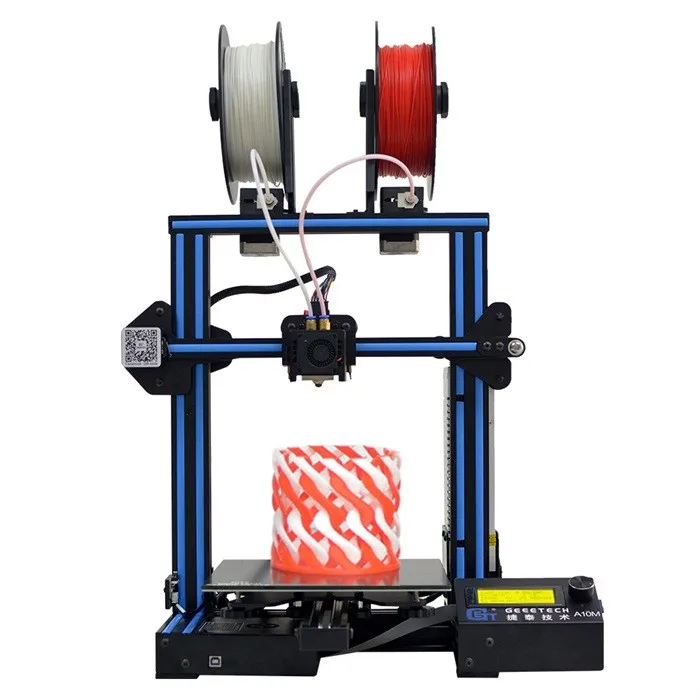 However, these processes have a high entry price, making them inaccessible to most users, while only one manufacturer offers a more affordable full color FDM 3D printer.
However, these processes have a high entry price, making them inaccessible to most users, while only one manufacturer offers a more affordable full color FDM 3D printer.
In certain cases, colored 3D prints may lack the detail or the vivid colors that an artist or designer aims for. Painting monochromatic 3D printed parts with acrylic, oil, or spray paint, while more time-consuming, offers an inexpensive and fully custom solution.
Side by side comparison on the before and after painting a dinosaur 3D printed SLA miniature.
Models that need a perfectly smooth finish or very fine features may require post-processing techniques, such as sanding, priming, or using a solvent prior to painting.
Sanding reduces imperfections in the surface, and primer fills in small cracks and holes. Additionally, some 3D printed parts may need an undercoat to diminish the neutral color of the primer before the paint application.
Watch or read our step-by-step guide on priming and painting 3D printed parts.
Hydrographics, also known as hydroprinting, water printing, or water transfer printing, is a common method for applying printed designs to three-dimensional surfaces. The process uses an inkjet printer to print an image on a polyvinyl alcohol film. The film gets submerged in water and receives an activator chemical spray. The color film then stretches over and adheres to the object as it’s slowly dipped through the floating film.
If you're interested in this process, read our guide about full color patterns to 3D prints with computational hydrographics.
The most used technologies in color printing are FDM, SLA, SLS/MJF, binder jetting, and material jetting. Let’s look at the pros and cons of each process.
FDM, or fused deposition modeling, is one of the most common and least expensive technologies in consumer 3D printing. FDM 3D printers build parts by melting and extruding thermoplastic filament, which a printer nozzle deposits layer by layer in the build area.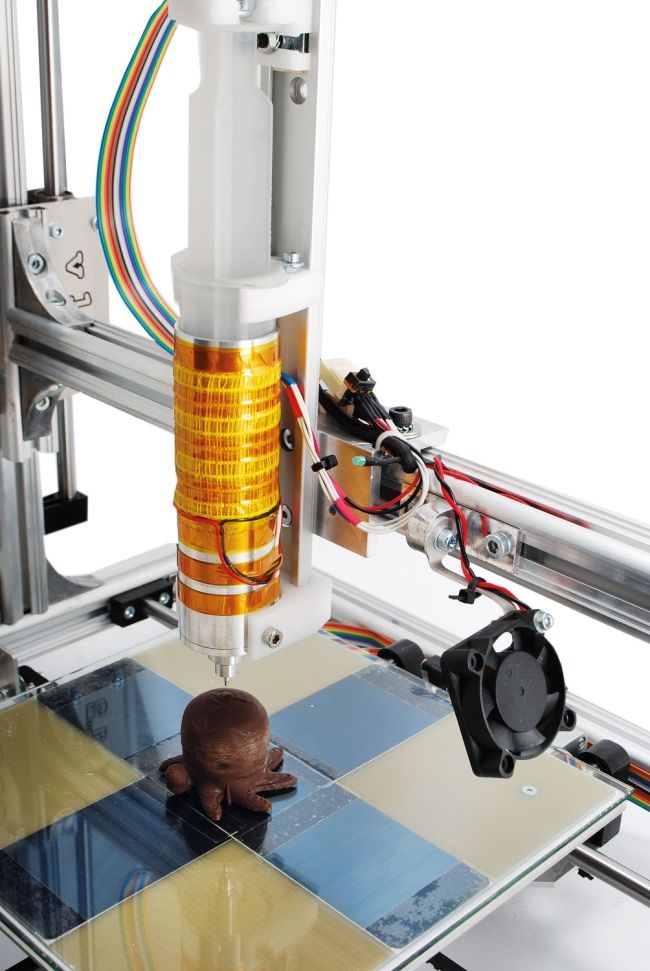
Filaments for FDM printing in various colors. (source: All3DP.com)
FDM is mostly used for direct color printing, with single extruder printers, or for color mixing 3D printing, with dual or multiple extruder printers.
FDM can now also be used for full color 3D printing with the da Vinci Color 3D printer. With a colorless filament that is dyed using CMYK inkjet cartridges right before being extruded, it produces colored parts in a similar way to a color 2D printer.
SLA, or stereolithography 3D printing, uses a laser to cure liquid resin into hardened plastic in a process called photopolymerization. SLA parts have the highest resolution and accuracy, the clearest details, and the smoothest surface finish of all plastic 3D printing technologies.
Colored SLA parts, 3D printed with Formlabs Color Kit and Standard Resins.
SLA offers the possibility for color matching almost any custom color using Formlabs Color Kit, the first integrated color-mixing solution for SLA 3D printing. Thanks to their smooth surface finish, SLA printed parts can also easily be post-processed, painted, and used for applying hydrographics.
Thanks to their smooth surface finish, SLA printed parts can also easily be post-processed, painted, and used for applying hydrographics.
White Paper
Looking for a 3D printer to realize your 3D models in high resolution? Download our white paper to learn how SLA printing works and why it's the most popular 3D printing process for creating models with incredible details.
Download the White Paper
Selective laser sintering is the most common additive manufacturing technology for industrial applications, trusted by engineers and manufacturers across different industries for its ability to produce strong, functional parts.
Dyed SLS 3D printed parts. (source: Hubs)
SLS 3D printers use white, grey, or black nylon powder as a raw material. While the parts cannot be directly printed in color, they can be dyed or painted in post-processing.
White Paper
Looking for a 3D printer to create strong, functional parts? Download our white paper to learn how SLS printing works and why it's a popular 3D printing process for functional prototyping and end-use production.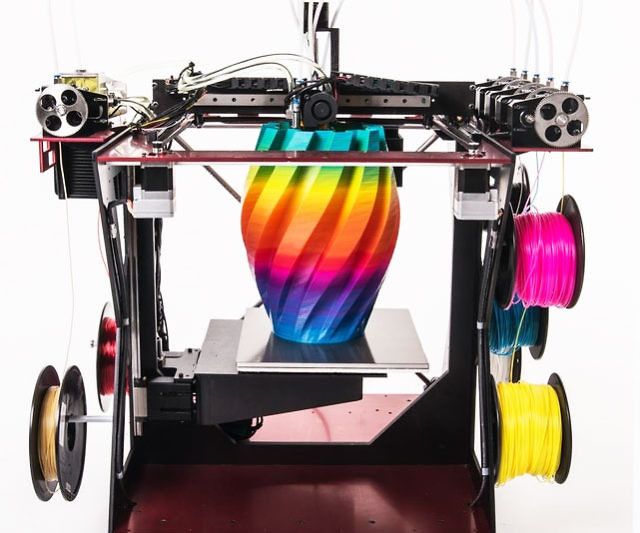
Download the White Paper
The binder jetting 3D printing technology is similar to SLS and MJF printing but uses a colored binding agent to bond powdered sandstone material instead of heat.
Parts produced with binder jetting have a porous surface and are very brittle, which means that this process is recommended only for static applications, such as creating full-color figurines and concept models.
Figurines printed with binder jetting. (source: Shapeways)
Material jetting 3D printers combine traditional inkjet printing with the use of photopolymer resins, by depositing droplets of the material on a build tray similar to 2D printers, which then gets hardened by UV light.
This process offers a myriad of color possibilities and can create photorealistic parts with vibrant colors. However, the parts have poor mechanical properties, are heat-sensitive, and the entry price for this technology is the highest of all color 3D printing options.
Color 3D printing with material jetting. (source: Hubs)
| FDM | SLA | SLS | Binder Jetting | Material Jetting | |
|---|---|---|---|---|---|
| Resolution | ★★☆☆☆ | ★★★★★ | ★★★★☆ | ★★★☆☆ | ★★★★★ |
| Accuracy | ★★★★☆ | ★★★★★ | ★★★★★ | ★★★☆☆ | ★★★★★ |
| Surface Finish | ★★☆☆☆ | ★★★★★ | ★★★★☆ | ★★★☆☆ | ★★★★★ |
| Ease of Use | ★★★★★ | ★★★★★ | ★★★★☆ | ★★★★☆ | ★★★★☆ |
| Complex Designs | ★★★☆☆ | ★★★★☆ | ★★★★★ | ★★★☆☆ | ★★★★☆ |
| Description | The print head melts and extrudes thermoplastic filament | A laser solidifies liquid resin | A laser or light source sinters nylon powder | A binding agent bonds sandstone powder | An inkjet-like print head cures droplets of resin |
| Materials | Thermoplastic filaments | Varieties of liquid resin | Varieties of polymer powder | Sandstone | Varieties of liquid resin |
| Color 3D printing options | Direct color, color mixing, or full color | Color matching | None | Full color | Full color |
| Post-processing with colors | Painting (requires a lot of post-processing) Hydrographic printing | Painting Hydrographic printing | Dyeing Painting Hydrographic printing | Painting Hydrographic printing | Painting Hydrographic printing |
| Applications | Basic modelmaking | Rapid prototyping, miniatures and models, medical models | Rapid prototyping, end-use parts | Miniatures and models | Rapid prototyping, miniatures and models, medical models |
| Price | Budget printers and 3D printer kits start at a few hundred dollars. Higher quality mid-range desktop printers start around $2,000, and industrial systems are available from $15,000. Higher quality mid-range desktop printers start around $2,000, and industrial systems are available from $15,000. | Professional desktop printers start at $3,750, large-format benchtop printers at $11,000, and large-scale industrial machines are available from $80,000. | Professional benchtop printers start at $19,000. | Full color 3D printers start around $60,000. | Full color 3D printers start around $50,000 and large-scale machines are available from $100,000. |
Video Guide
Having trouble finding the best 3D printing technology for your needs? In this video guide, we compare FDM, SLA, and SLS technologies across popular buying considerations.
Watch the Videos
Color 3D printing empowers engineers and designers to save money and time with looks-like prototypes, movie makers to turn digital models into props, model makers to create vibrant miniatures, medical professionals to produce accurate anatomical models, and more.
Rapid prototyping helps companies turn ideas into realistic proofs of concept, advances these concepts to high-fidelity prototypes that look and work like final products, and guides products through a series of validation stages toward mass production.
The development team at birdkids used SLA 3D printing to create prototypes in color.
Concept models in color can demonstrate an idea to stakeholders, create discussion, and drive acceptance or rejection using low-risk concept explorations.
At later stages, realistic looks-like prototypes in color can give a better idea of what an end product will look like and how the end-user will interact with it. Ergonomics, user interfaces, and overall user experience can be validated with 3D printed looks-like prototypes before spending significant design and engineering time to fully build out product features.
Color matching 3D printing or full color 3D printing also allows product development teams to experiment with different color options and run studies with customers before moving into production.
In the entertainment industry, 3D printed props and models are blurring the line between physical models and digital effects. Artists create realistic, detailed models using 3D modeling software and then bring them to life in a matter of hours using 3D printing. High-resolution 3D printing processes, like SLA, can reproduce even the most complex parameters of a design, such as skin texture.
A behind-the-scenes look at visual effects (VFX) and design studio Aaron Sims Creative’s process to design of Stranger Things’ Demogorgon.
Props masters, such as Russell Bobbitt for Marvel movies and Jaco Snyman for the Raised by Wolves series, as well as visual effects (VFX) and design studio Aaron Sims Creative for Stranger Things, have adopted the technology, as it significantly saves time in prop making and fuels creativity in the design process. The creation becomes more flexible and fluid, and props and models can be created in an efficient manner.
Without a doubt, 3D printing has revolutionized the creation of custom miniatures and figurines, whether for model making, tabletop games, collectibles, or other hobbies.
As full-color 3D printers are often out of budget for hobbyists and model makers traditionally hand-paint models anyway, the most popular way to create colorful models is to paint them after 3D printing.
For example, artists at Modern Life Workshop combine 3D modeling design with SLA 3D printing to create hyper-realistic celebrity portraits. The artists use the digital freehand sculpting software ZBrush to create detailed models on the computer. Then, they 3D print the designs on an SLA 3D printer and paint the parts by hand.
The artists from Modern Life Workshop create hyper-realistic sculptures with ZBrush and 3D printing.
In gaming, online communities have sprung up around tabletop games like Dungeons & Dragons, for which gamers use 3D printers to create one-of-a-kind D&D 3D printed miniatures, figurines, terrains, landscapes, and other board game accessories.
Professional model-making companies, like DM-Toys, also use 3D printing to accelerate prototyping and production cycles of custom models.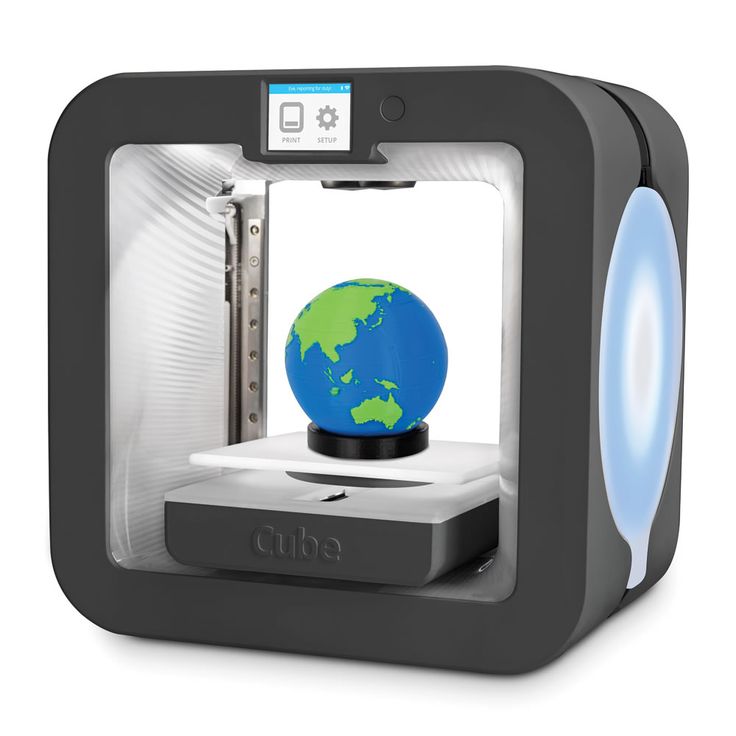
Global play and entertainment company Hasbro also uses the technology to create Hasbro Selfie Series figures—a groundbreaking endeavor to use 3D printing to manufacture personalized action figures at scale. For the first time, fans are now able to scan their face with a smart device and have a custom-made look-a-like action figure delivered to their door.
In healthcare, radiologists, surgeons, and biomedical professionals are increasingly turning to 3D printing to create accurate 3D models of anatomical features that can be used as reference tools for preoperative planning, intraoperative visualization, and education.
3D printing empowers medical professionals to create complex models with intricate details that would be impossible to produce with other technologies.
A fully colored pancreas model that was produced with SLA 3D printing and then painted with acrylic.
High-detailed color models are excellent in resident education programs, where each blood vessel or organ can be directly 3D printed or painted in different colors for easy classroom viewing.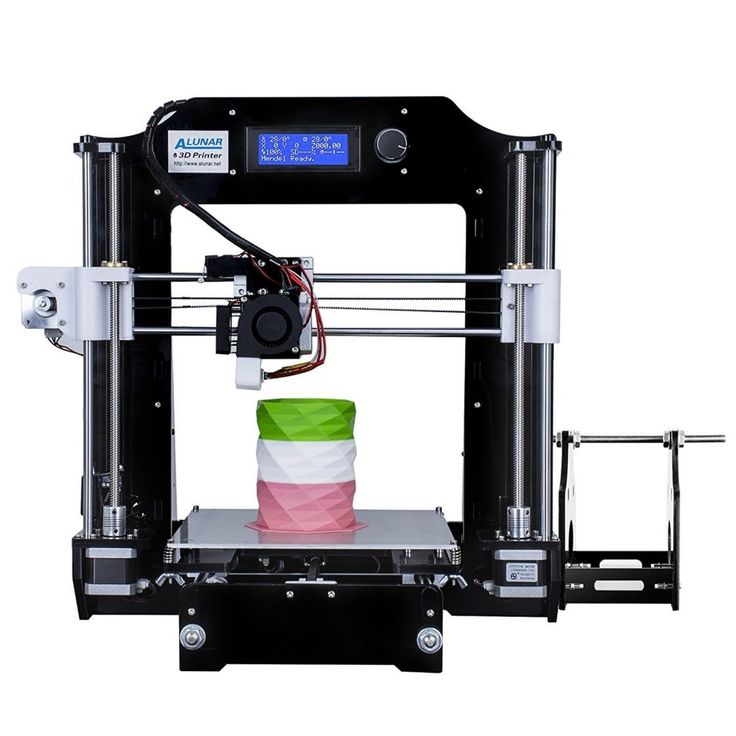
Furthermore, patient-specific surgical models that are based on patient scan data are becoming increasingly useful tools in today’s practice of personalized, precision medicine.
Whether it is color matching to create 3D printed parts in almost any custom color, or printing high-resolution parts that can be painted to create hyper-realistic models, SLA 3D printing delivers incredible detail and seamless performance at an affordable price point.
Start 3D printing your own 3D printed parts on the Form 3 and bring your biggest ideas to life with the Form 3L.
See the Form 3See the Form 3L
Can 3D Printers Print in Color? How to Change Colors While Printing – 3D Printerly
The 3D printing process is one that has been developed gradually and has slowly been increasing its abilities. Some people wonder whether 3D printers print in color, so I decided to write an article answering that question.
3D printers can print in colors and can even have colors mixed together using a dual extruder 3D printer, using certain devices that separate colors during printing, and even manually changing filament yourself.
Keep on reading through this article to get more knowledge in 3D printing with multiple colors, and other useful info.
Do 3D Printers Print in Color or Multiple Colors?
3D printers are able to print in one color or multiple colors in a range of different materials. You have a wide range of filament colors to choose from such as white, black, yellow, red, blue, green, pink, purple, brown, rainbow, wood textures, and much more.
Some techniques even allow you to mix two filaments together to make a different color, but this is quite difficult to do and requires precision in certain settings, as well as the right equipment.
Multicolor printing is a fantastic technique for 3D printer hobbyists as it allows you to bring your simple 3D file into life using contrasting colors.
Color 3D printing options are majorly divided into two basic categories, direct color 3D printing, and indirect color 3D printing.
In direct 3D color printing, color is directly derived from the filament being used in the printing process while in indirect color 3D printing, an external device, equipment, or any type of external source is used to apply color to the model while it is being printed.
The print below is a mixture of silk gold PLA and red PETG using the pause at layer height or layer swapping method described later in this article.
How Do You 3D Print with Two Colors
One of the best methods to 3D print with two colors is to use the pausing function on your 3D printer, or inserting pauses within the printing file, then switching the filament yourself. You can get a dual-color hotend that has two entry points and one nozzle at the end, or a dual extruder 3D printer.
Color mixing is the process in which two different filaments are extruded at the same time to form two-color prints or develop a unique color by merging of both. It can be done with special hotends that are built to mix filament.
Many people have been starting to use objects like the Mosaic Palette 2 from Amazon or the Prusa Multi Material Upgrade 2S (MMU2S) from Prusa, which enables you to 3D print with up to 5 colors at the same time.
It simplifies the process by incorporating a calibration process, a new filament sensor, as well as a standalone filament buffer – all to produce reliable multi-color 3D prints.
How to 3D Print Multiple Colors on an Ender 3
As we all know that Ender 3 comes with a single extruder which is considered as not applicable to 3D print multiple colors, but the truth is that you can easily print multiple colors on an Ender 3 with the help of a few simple steps.
All you have to do is to slice the file in Cura a certain way and get it to work. We will go through printing a CHEP CUBE on the Ender 3.
The cube will be 100 layers and we can print every 25 layers of the model in a different color by inputting a pause function in the G-Code instructions.
Check out the video below to see how it’s done.
Load your CHEP CUBE into Cura Slicer.
Click on Extensions (in the top menu bar) > Post Processing > Modify G-Code.
A new window will open, click on the Add Script button (present on the left side of the window) and a drop-down menu will appear.
Click on the Pause at Height from the drop-down menu. (new settings will appear on the right side of the window).
Click on the dropdown menu located in front of the Pause at the option and (as height doesn’t have to be a dimension) select Layer No.
As we want to print the first 25 layers in a color, enter 25 in the Pause Layer
Adjust all other settings according to your needs or depending on your model. You can go with Park Print Head X at 20mm, Park Print Head Y at 20mm, Retraction at 25mm, Retraction Speed at 50mm/s, Extrude Speed at 3.333mm/s, Redo Layers at 1, and Standby Temperature at 25 Degrees Celsius (these settings are only recommended for printing color CHEP CUBE).
Setting the Standby Temperature is important because it will avoid the chances of over extrusion that can happen before starting the new layer because of nozzle heating up.
For layers 26 to 50, add a new script just like it is mentioned above. All the settings’ values will remain the same, the only thing that will differ is the number of layers in the Pause Layer tab which will be 50 now because it is the last layer for the second color.
Repeat this step from the Pause Layer at 75 and click Close (you are not required to perform the same steps for the 100th layer because it is predefined as an ending layer).
There will be a button called Prepare in the bottom-right corner of the Cura’s window with a Wrench symbol to its left as well.
Click on the wrench symbol if you want to go back to these settings for adjustments and if your settings are proper, click on Prepare.
Once the process is completed, save your file and review the newly generated G-Code.
Double-check your values in the G-Code before starting the printing process.
Now insert your SD Card into Ender 3, load the filament color you want to add in the first 25 layers and start the printing process like you normally do.
Once 25 layers are printed, the printing process will stop automatically with a message on Ender 3 screen as Wait for User…
Pull back your previous filament and insert the new color for layers 26 to 50.
Heat the nozzle to drain all the previous filament until you clearly begin to see your new color filament.
Now resume the printing process by pressing the printer button.
Another option which can be done in less steps is using the same “Modify G-Code” button, but choosing the “Filament Change” option.
This is a simple script which asks you to input which layer you want to change filament, where you can choose multiple options by putting a comma between the numbers.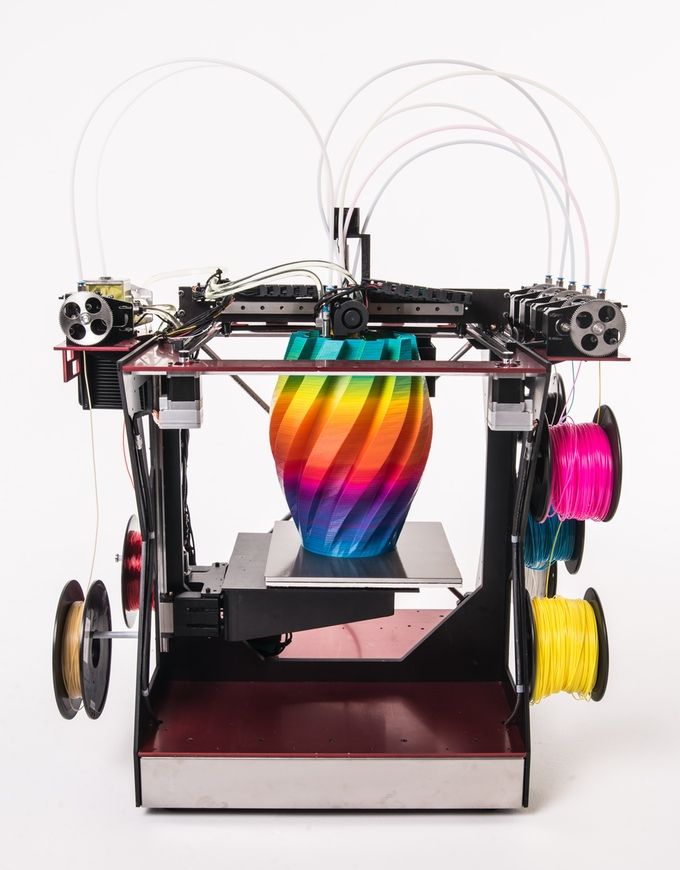
The other options don’t really need to be changed, being the retraction distances and XY extruder position for changing the filament.
How to Do Two-Color 3D Printing with a Single Extruder Machine
People usually think that they can only print two-color models with a single extruder by spending extra costs on upgrading their printer. Well, we have summed up some of the best methods that can help you print two-color 3D prints of your interests with a single extruder.
- Separate Part Printing
- Layer Swapping
- First Layer Inlay
- Top Layer Inlay
Separate Part Printing
As its name implies, separate parts of a model are important in different colors and then combined to form a complete model. This is best suitable for prints that do not include any complex angles and have straight walls so that they can be slotted together properly.
Layer Swapping
This is one of the most common and favorite methods of printing color models using a single extruder because of its ease. You only have to pause the print where you want to switch the color.
You only have to pause the print where you want to switch the color.
Change the filament and pull back the previous filament from the nozzle properly.
The process of pausing and resume can be done through your printer’s control box or through the G-Code file. This method allows you to change colors with the specific layer count and can print models that will include a lot of colors.
It is the same as the method described above, using the “Modify G-Code” line to help make those changes to the filament every so often.
First Layer Inlay
This is a process in which you print a part of the print and once the print is completed, let it stay on the print bed. Now design your second part, insert the filament of different colors, and print the second part directly on the previous printed model.
Top Layer Inlay
Instead of extruding into the model and declaring it finished, create the first layer inlay as usual. Then on the top surface, add the chamfer or draft angle to the extrusion.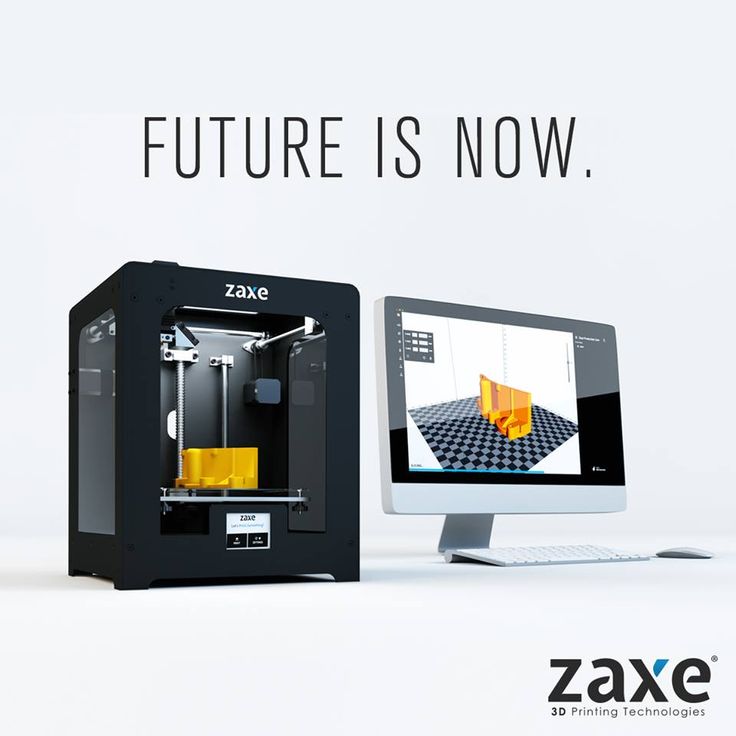 This process allows you to print multiple layers of the top inlay so that you cannot see through different layers.
This process allows you to print multiple layers of the top inlay so that you cannot see through different layers.
The taper or cavity is specifically selected to leave enough space for the nozzle tip, to ensure that it doesn’t collide with the previously printed model layers. You usually have to print three models to get one of different colors as:
- Print first layer inlay and then pause the printing process.
- Print the main body and again pause printing.
- Print top layer inlay and complete your color 3D printed model
2-In-One Aibecy Dual Color Metal Hotend Extruder Kit
This dual-color hotend extruder kit is best suitable for CR-10 series or Ender 3 3D printers, but still works for others. This kit has the ability to access two different color filaments while extruding from a single extruder.
It works by switching from one input to another during the printing process. It is fast, reliable, stable and the resultant print usually doesn’t have any visible defects.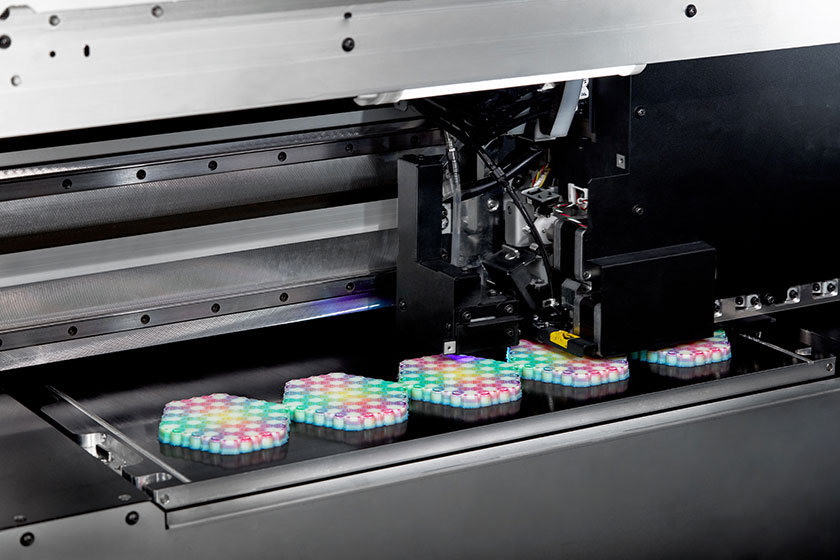
- Aluminum heating block
- Extrude through a hot end while switching between different inputs during the printing process.
- Quick processing
- Stable printing
- High-quality prints
- Stainless steel body
One user had nothing but praises for the 2-in-one Aibecy hotend after completing their first 2-color 3D print. Once you dial in your retraction settings such as distance and speed, you can get some amazing looking 3D prints.
Even if you don’t use the two colors all the time, one user mentioned how he created some of the cleanest 3D prints he’s ever done after installing this device. They got zero clogs even after consistent 3D printing over a 2-month period.
Multicolor printing.
I will share with you how to realize good quality printing in different colors. Naturally, your printer must have 2 or more printing nozzles. I will dwell on printing in 2 colors, 3 or more colors are configured in the same way, just the encoding will become a little more complicated.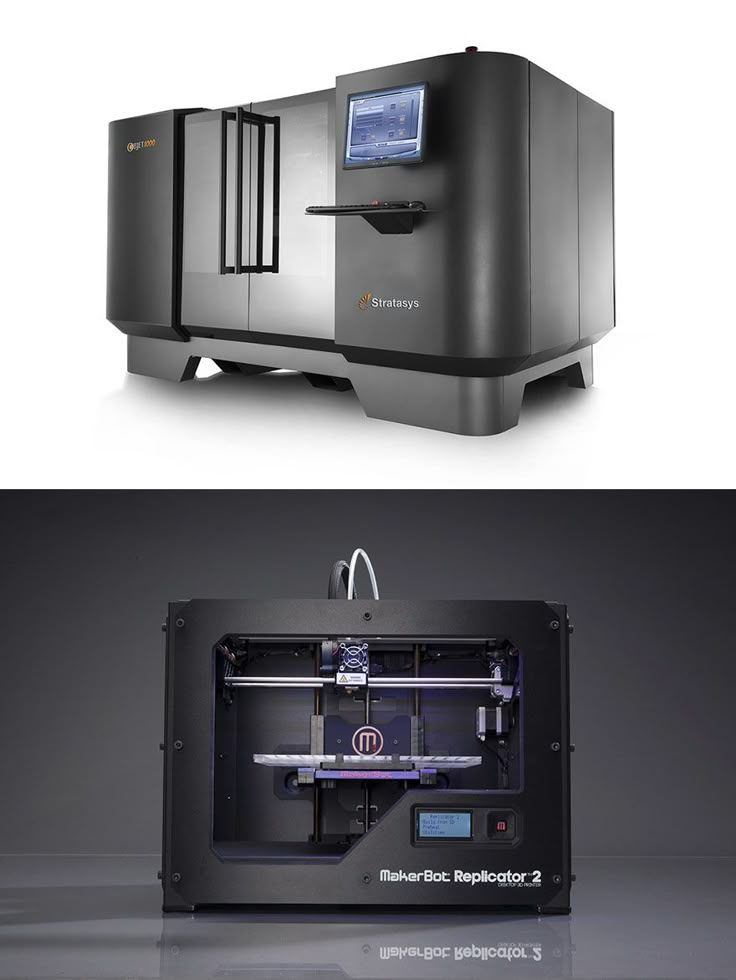
To begin with, we need software in which we will implement all our plans. Perhaps the manufacturer of your printer supplied software with it, and it is very possible that this software does its job well, but I offer a 100% option for all printers in general.
And so let's go...)) We follow the link http://www.repetier.com/ and download the latest version of Repetir-host. It should be noted right away that your account on your computer must be written in Latin letters, something like Frog or Admin or even fnviiiifdneinie. The thing is that the slic3r slicer, in which we will do 2-color printing, works only if all Latin letters are in the installation path. If you have an account in Russian, make a new one and transfer everything from the old one. Actually, I did and did not regret it)
Adjusting the nozzles, don't forget to adjust the Dimensions, everything else works fine by default.... Throw the model in the object placement tab and open the Slicer tab. In it, select slic3r.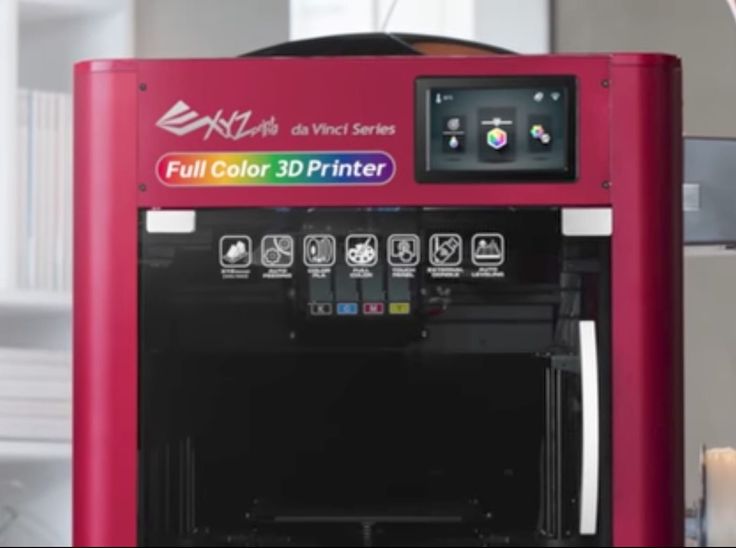
Next, click Configuration, if everything is installed normally, the slic3r configuration window will pop up.
I will not dwell on its settings in this post, but for those who do not like to search for themselves http://www.lugrap.com/2013/10/rus-manual-slic3r-expert.html such is the most detailed manual.
I will only touch on the settings for the 2nd print. Next.. After you have registered all the necessary settings for your printer in the slic3r settings, I advise you to save them to a profile thread. This will be your settings for single color printing. There you can set up a second head to print supports, say, water-soluble PVA plastic, or some other plastic. Actually, 2-color printing is no different from single-color printing, the settings are the same. However, for competent printing in 2 colors, we need to change the initial G-code, and not to do this every time, because. lazily, we will save these settings to another profile. And whenever we need 2 flowers, we will simply choose it, see the picture above, in the Printer Settings tab.
This is how saving a profile looks like...
G92 E0
G1 E20 F200
G1 E18 F900
G92 E0
T1
G1 E20 F200
G1 E18 F900
9000 G92 G92 E0T0
9000 G1 x0.0 F3000G1 ZZ0 G1 ZZ0 G1 ZZ0 G1 ZZ0. 0 F3000
where... T0 and T1 tool change (head switching), G1 Z5.0 F3000 - move down the table by 5 mm at a speed of 3000 microsteps per second, G1 X50.0 F3000 - move along the X axis by 50 mm, G1 E20 F200 - plastic extrusion.
This code prepares the nozzles for work, squeezing plastic from one, then from another, get ready to remove a bunch of plastic with tweezers when printing. This code is relevant for my printer. The head parking point is in the upper right corner of the table and the code works from there. You can always adapt it for your printer by changing the coordinates in the code.
Save it to another profile, I have '2' and it's simple and clear))) Next..
In the Extruder1 tab, find the Length parameter and set the value from 5 to 10.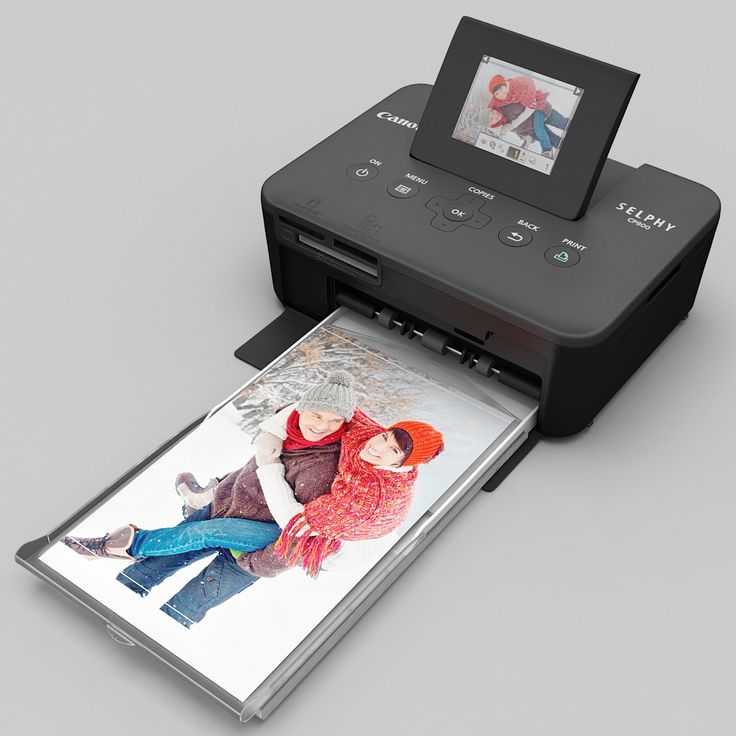 This is the value of the retract, plastic return, when changing the head. This is done so that the nozzle does not snot while waiting for its turn. The parameter is selected depending on your extruder. I have a value of 10, I have a hotend of my own design, so I can afford a 10mm retract. Such a retract is achievable for the e3d hotend and a number of others, but for many it can be the cause of a blockage. 10 gives an almost perfect result - no snot))) In any case, you need to test it.) Save.
This is the value of the retract, plastic return, when changing the head. This is done so that the nozzle does not snot while waiting for its turn. The parameter is selected depending on your extruder. I have a value of 10, I have a hotend of my own design, so I can afford a 10mm retract. Such a retract is achievable for the e3d hotend and a number of others, but for many it can be the cause of a blockage. 10 gives an almost perfect result - no snot))) In any case, you need to test it.) Save.
In slic3r, I did not indicate that the printer has 2 extruders, and did not indicate the offset between the heads, the program takes this data from the firmware. If you have a gap between the colors or, on the contrary, overlapping layers, then you need to edit the firmware or calibrate the heads if there is such an adjustment.
To print in 2 colors, you must have 2 models, the 3rd - 3, etc. One model for each color. Note that Points (centers of rotation, displacement) must match when modeling these objects.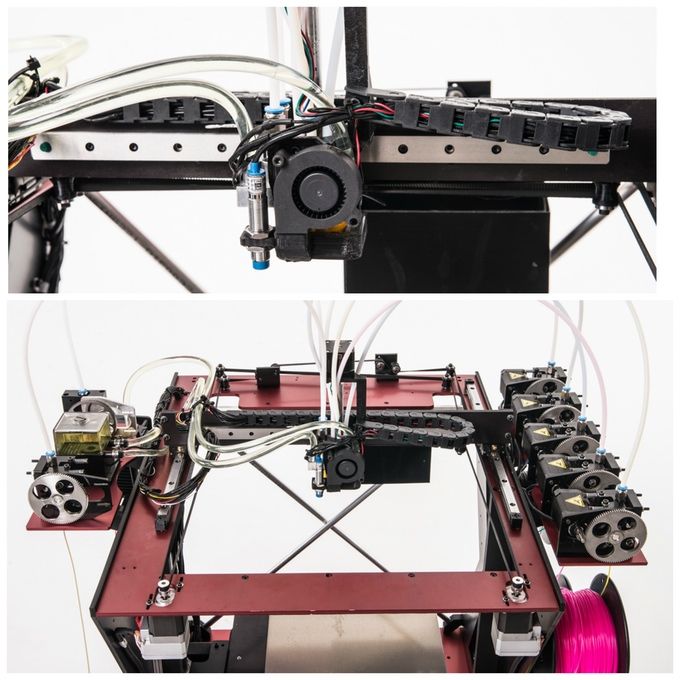 This is important for assembling an object in Repetier.
This is important for assembling an object in Repetier.
Here is an example of 2 models with extruders assigned, as you can see the colors of the models are different. In my case, yellow is the first extruder, red is the second.
Center each object with the button (target).
It turns out like this. The program swears that the objects intersect, we do not listen to it, open the Slicer tab, select our favorite slic3r already configured and in the Printing Settings tab it is unforgettable to select our profile for double printing. Press Slicing))) wait and print)) Do not forget to warm up the table and heads!!
The result of all the suffering is something like this...
Case for iPhone 4... made as a gift for the day of jam to a fan of the Chicago Blackhawks. I did not specify why not our hockey, I just did it) Modeling 1 hour, 3 hours of printing.
Well, it seems that the whole concept of 2-color printing, as you can see, is working, write, ask questions, I will answer everyone))) Good luck in your work))
how not to miss the choice of a specific model for a beginner 3D printer / 3D printers , machines and accessories / iXBT Live
A 3D printer is a modern gadget that allows you to create unique models from polymer materials using FDM or SLA technologies. Such printers allow you not only to print the model you have designed according to individual drawings, but also to replicate it, repeating it over and over again. 3D printers have found their application in modeling, construction and design, industry and medicine. But users often make mistakes, obeying wow impulses and making spontaneous purchases. Knowing what you need a printer for will help you narrow down your search and choose the right model.
Such printers allow you not only to print the model you have designed according to individual drawings, but also to replicate it, repeating it over and over again. 3D printers have found their application in modeling, construction and design, industry and medicine. But users often make mistakes, obeying wow impulses and making spontaneous purchases. Knowing what you need a printer for will help you narrow down your search and choose the right model.
Beginners often fall for a number of common mistakes and make the wrong choice. Most often, this leads to a situation where a person “cools down” to 3D printing, and the purchased printer remains gathering dust in the corner. Sometimes this is caused by technical problems and a lack of the required level of knowledge and experience, sometimes by an incorrect choice of printer model.
The first mistake is the lack of a purposeful choice
First, try to decide on the purpose - what do you need a 3D printer for. Honestly imagine what models or details you will print on it and what scale. This is necessary in order not to waste money and time, and not to get an unclaimed device in a dusty corner. A compact 3D printer will be appropriate in the office or at home, it will be helpful in studies, hobbies or in your own business. The printer allows you to print models that you yourself have drawn in CAD, create components for a training project, shapes and parts for hobby and modeling, use open projects. Determine the media you plan to print with. FDM filaments such as PLA/ABS/PETG are available, as well as exotic (WOOD/Carbon/Nylon), elastic (TPU/Flex), etc., as well as photopolymer resins (SLA Resin). And if PLA / ABS are available for almost all FDM models, then compatible printers should be selected for the rest. For example, Nylon is extremely demanding on adhesion, TPU / Flex - on the plastic feed mechanism, etc.
This is necessary in order not to waste money and time, and not to get an unclaimed device in a dusty corner. A compact 3D printer will be appropriate in the office or at home, it will be helpful in studies, hobbies or in your own business. The printer allows you to print models that you yourself have drawn in CAD, create components for a training project, shapes and parts for hobby and modeling, use open projects. Determine the media you plan to print with. FDM filaments such as PLA/ABS/PETG are available, as well as exotic (WOOD/Carbon/Nylon), elastic (TPU/Flex), etc., as well as photopolymer resins (SLA Resin). And if PLA / ABS are available for almost all FDM models, then compatible printers should be selected for the rest. For example, Nylon is extremely demanding on adhesion, TPU / Flex - on the plastic feed mechanism, etc.
For example, for modeling in scales 1:72, 1:350, etc. It will be convenient to use an SLA printer that allows you to create products with high detail of photopolymer resin. That is, first we set a goal for ourselves - what the printer is for, and then we select the appropriate model. For example, quite high-quality and popular ANYCUBIC Photon models with high printing accuracy. And for an introduction to 3D printing, a simple and reliable printer like the Artillery Hornet or the Creality3D Ender-3 will do.
That is, first we set a goal for ourselves - what the printer is for, and then we select the appropriate model. For example, quite high-quality and popular ANYCUBIC Photon models with high printing accuracy. And for an introduction to 3D printing, a simple and reliable printer like the Artillery Hornet or the Creality3D Ender-3 will do.
Second mistake - buying 3D printers with a large margin
One of the most common user mistakes when choosing a 3D printer is buying a "bigger" and "oversized" model. I encounter this type of error quite often. First, the user "invests" in a large printer, and then realizes that there is nothing to print on this option, and for small parts, a smaller printer could be chosen. First of all, large printers are more expensive, larger in size and more demanding on the rigidity of the frame as a whole. On a large area of the table, the effects of shrinkage of plastic, distortion of the dimensions of the printed model, delamination of the applied plastic, as well as peeling off of the corners from the working surface of the table, are more pronounced. This can be dealt with, but the listed points can become a serious problem for a novice user. And the printing time for large-volume models can be measured in tens of hours.
This can be dealt with, but the listed points can become a serious problem for a novice user. And the printing time for large-volume models can be measured in tens of hours.
Purchasing large margin 3D printers can be justified in cases where you really plan to print large models without splitting, as a whole. A good example of a 3D printer with a large workspace would be Anycubic's Chiron (table size 400 x 400 mm with a maximum print height of 450 mm), the LONGER LK5 Pro (300 x 300 x 400 mm with additional frame reinforcement), or the Artillery Sidewinder X1 (also 300 x 300 x 400 mm).
Third mistake - buying 3D printers with complicated calibration
Another common mistake users make is buying 3D printers with complicated calibration. These can be Delta printers, Scara models and the like. At first glance, they may seem interesting and simple, but from experience I will say that fine-tuning such printers can be a significant problem for the owner, requiring a deep understanding of the mechanics of the printer and the principles of 3D printing, as well as quite complex calibration of the movement of the print head along all axes of the device.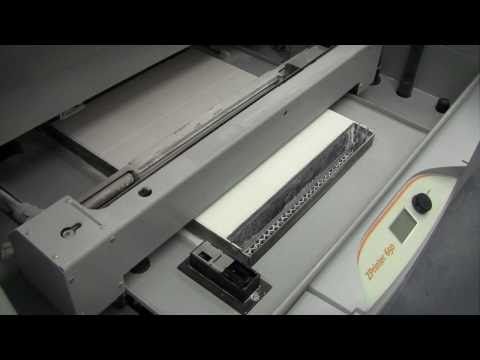 Up to the fact that the resulting printing problems can completely discourage further desire to print and study 3D modeling.
Up to the fact that the resulting printing problems can completely discourage further desire to print and study 3D modeling.
Therefore, we check the characteristics and description of the selected models in advance. Examples of similar printers from Aliexpress are Flsun Delta Kossel, Anycubic Kossel, HE3D Kossel and the like. An acceptable option is when modern 3D printers are equipped with automatic sensors for calibration and table calibration assistants in the regular display menu.
Mistake Four - Color 3D Printers
Buying complex printers that can print with multiple colors or multiple plastics can cause additional problems. Yes, the result of multi-color printing of models or colored figures without the need for coloring can be interesting. But in real printing, you will face the complex preparation of the model in the slicer, the need for a deep understanding of the process and the nuances of printing with several types of plastics.
There are several dual filament printing options, ranging from Y-extruders to multiple independent printheads. When printing alternately one of the two heads, heated plastic can seep out of the unused one - you need to take into account retracts, “cleaning” before changing plastics (an additional separate “service” model is built nearby), calibration and alignment of the heads along the same coordinates. Color models must be loaded into the slicer separately, assigning a different model to each extruder. And if you still need color printing for work or your own project, then it makes sense to choose one of the proven models. For example, the JGMAKER Artist D 3D printer, which has two movable and independent print heads at once, each of which can be filled with a separate spool of plastic. This makes it possible not only to print color models, but also to create two separate models on the table at the same time, and it will also be convenient for printing soluble supports.
When printing alternately one of the two heads, heated plastic can seep out of the unused one - you need to take into account retracts, “cleaning” before changing plastics (an additional separate “service” model is built nearby), calibration and alignment of the heads along the same coordinates. Color models must be loaded into the slicer separately, assigning a different model to each extruder. And if you still need color printing for work or your own project, then it makes sense to choose one of the proven models. For example, the JGMAKER Artist D 3D printer, which has two movable and independent print heads at once, each of which can be filled with a separate spool of plastic. This makes it possible not only to print color models, but also to create two separate models on the table at the same time, and it will also be convenient for printing soluble supports.
Fifth mistake - choosing simplified "children's" models
There are entry-level models in the range of 3D printer manufacturers. Sometimes a manufacturer saves by releasing models at the bottom of the market. These are budget options for novice users; in fact, these are “children's” printers. A good example is the Wanhao Duplicator i3, a simplified L-layout printer. The reduced rigidity of the carrier frame does not allow for high print quality. I note that the choice of models without blowing the thermal barrier can also be a potential problem. When printing for a long time, the thermal transition in the print head overheats and plugs can occur, leading to damage to models. This also includes 3D printers without a heated desktop, designed to print only with PLA plastic.
Sometimes a manufacturer saves by releasing models at the bottom of the market. These are budget options for novice users; in fact, these are “children's” printers. A good example is the Wanhao Duplicator i3, a simplified L-layout printer. The reduced rigidity of the carrier frame does not allow for high print quality. I note that the choice of models without blowing the thermal barrier can also be a potential problem. When printing for a long time, the thermal transition in the print head overheats and plugs can occur, leading to damage to models. This also includes 3D printers without a heated desktop, designed to print only with PLA plastic.
However, children's models are also important and needed. They are designed to provide basic skills and an introduction to the world of 3D printing on a limited budget. A vivid example of such a model is the Funtastique EVO and LONGER Cube2 3D printers, which can be an interesting gift for a schoolchild.
What to choose from the range of available 3D printers?
Thus, imagining the use of a 3D printer specifically for your purposes, you can choose the right model.